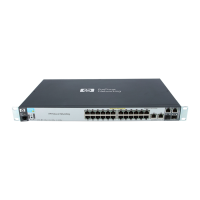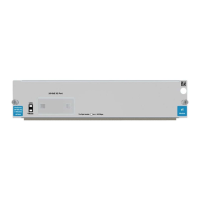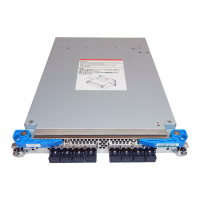Port Status and Configuration
Using Friendly (Optional) Port Names
Syntax: show interface < port-number >
Includes the friendly port name with the port’s traffic statistics
listing.
For example, if you configure port 5 with the name “O’Connor_10.25.101.43”,
the show interface output for this port appears similar to the following:
ProCurve(config)# show int 5
Status and Counters - Port Counters for port 5
Friendly Port
Name : O’Connor@10.25.101.43
Name
Name :
MAC Address : 001ffe-74b3fb
Link Status : Down
Totals (Since boot or last clear) :
Bytes Rx : 0 Bytes Tx : 0
Unicast Rx : 0 Unicast Tx : 0
Bcast/Mcast Rx : 0 Bcast/Mcast Tx : 0
Errors (Since boot or last clear) :
FCS Rx : 0 Drops Rx : 0
Alignment Rx : 0 Collisions Tx : 0
Runts Rx : 0 Late Colln Tx : 0
Giants Rx : 0 Excessive Colln : 0
Total Rx Errors : 0 Deferred Tx : 0
Others (Since boot or last clear) :
Discard Rx : 0 Out Queue Len : 0
Unknown Protos : 0
Rates (5 minute weighted average) :
Total Rx (bps) : 0 Total Tx (bps) : 0
Unicast Rx (Pkts/sec) : 0 Unicast Tx (Pkts/sec) : 0
B/Mcast Rx (Pkts/sec) : 0 B/Mcast Tx (Pkts/sec) : 0
Utilization Rx : 0 % Utilization Tx : 0 %
Figure 10-18. Example of a Friendly Port Name in a Per-Port Statistics Listing
For a given port, if a friendly port name does not exist in the running-config
file, the Name line in the above command output appears as:
Name : not assigned
To Search the Configuration for Ports with Friendly Port Names.
This option tells you which friendly port names have been saved to the startup-
config file. (show config does not include ports that have only default settings
in the startup-config file.)
10-27

